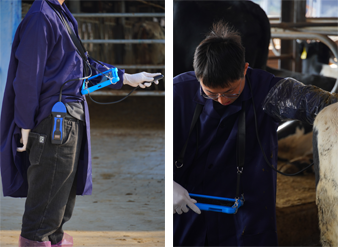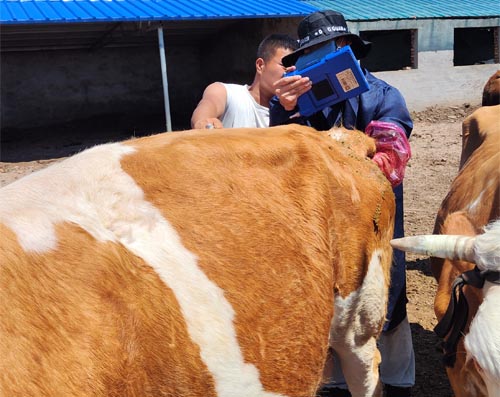Veterinary equipment is one of the most valuable investments in any animal clinic or livestock practice. From ultrasound machines and X-ray units to surgical tools and sterilizers, these devices make it possible to diagnose, treat, and care for animals effectively. However, buying the equipment is only the first step. Proper care and maintenance are what keep it running smoothly for years. If the machines are neglected, they can break down, cost a fortune in repairs, and even put animal health at risk. Let’s break down some of the most important steps for keeping vet equipment in top condition.

Regular Cleaning and Hygiene
One of the simplest but most important steps in caring for veterinary equipment is regular cleaning. Each tool and machine comes into contact with animals, and sometimes with blood, fluids, or bacteria. If not cleaned properly, they can spread infections or damage the device itself.
Cleaning should always follow the manufacturer’s guidelines. For example, ultrasound probes often require a specific type of disinfectant. Using the wrong chemical can damage the delicate probe surface. Surgical tools should be cleaned immediately after use to prevent buildup. By making cleaning part of the daily routine, clinics not only protect their patients but also extend the lifespan of their devices.
Scheduled Maintenance and Inspections
Even the most durable veterinary machines need routine checkups. Just like animals need health exams, machines need inspections. This involves checking for loose connections, worn-out parts, or irregular noises. Preventive maintenance often costs much less than emergency repairs.
Many manufacturers recommend having a professional technician perform regular service checks. For example, anesthesia machines need calibration to ensure the right gas levels are being delivered. Ignoring such checks could lead to serious risks during surgery. By scheduling inspections every few months, clinics can keep equipment safe, reliable, and ready to use.
Proper Storage and Handling
How equipment is stored makes a big difference in its longevity. Veterinary clinics can be busy places, with staff moving quickly between rooms and procedures. If machines are left in the wrong place or handled roughly, they can be damaged easily.
Delicate devices like ultrasound scanners should be stored in protective cases when not in use. Cords and cables should be coiled neatly to prevent fraying. Heavy equipment should be placed in areas where it won’t be knocked over. By treating the machines with care, clinics save money and avoid downtime caused by avoidable accidents.

Staff Training and Responsibility
Another key factor in equipment care is staff training. Even the best machine will not last long if people don’t know how to use it correctly. Every staff member should be trained on how to handle, clean, and maintain the devices they use.
For example, if an assistant doesn’t know that ultrasound gel must be cleaned off the probe immediately, they might leave residue that damages it over time. Or if someone mishandles an endoscope by bending it too sharply, it could cost thousands in repairs. By training staff properly, clinics ensure everyone takes responsibility for the tools that keep animals healthy.
Calibration and Software Updates
Many modern veterinary devices run on advanced software. Ultrasound machines, diagnostic monitors, and lab equipment often need updates to stay accurate. Ignoring updates can lead to wrong results, which could mislead diagnosis or treatment.
Calibration is equally important. A scale used for weighing animals, for example, must be checked regularly to ensure accurate readings. Small errors can affect medication doses or treatment plans. By keeping devices calibrated and updated, clinics maintain accuracy and professionalism in their care.
Common Equipment and Their Care Tips
Different types of veterinary equipment have different care needs. The table below summarizes a few common examples and what clinics should do to keep them in good condition.
| Equipment | Care Tips |
|---|---|
| Ultrasound Machine | Clean probe with approved disinfectant, store in protective case, update software regularly. |
| Surgical Tools | Rinse immediately after use, sterilize according to guidelines, inspect for rust or damage. |
| Anesthesia Machine | Check gas levels, calibrate regularly, replace worn-out hoses and seals. |
| Endoscopes | Handle gently to avoid bending, clean with special solutions, store in a hanging cabinet. |
| Weighing Scales | Keep clean from animal waste, calibrate often, avoid overloading. |
Why Proper Care Matters
Caring for veterinary equipment is not just about saving money. It is about ensuring that animals receive the best care possible. A broken or inaccurate machine could lead to misdiagnosis, wrong treatments, or delayed care. This can harm the animal and damage the clinic’s reputation.
On the other hand, well-maintained equipment builds trust with pet owners and livestock farmers. When clients see that a clinic takes care of its tools, they are more confident in the quality of service. It also helps the clinic operate more smoothly, without sudden interruptions due to equipment breakdowns.

Conclusion
Veterinary equipment is an essential part of modern animal healthcare. From diagnosis to treatment, these machines make the job possible. But their effectiveness depends on how well they are cared for. Regular cleaning, scheduled maintenance, proper storage, staff training, calibration, and software updates all play a role in keeping devices in good shape.
By investing time and effort into equipment care, clinics save money, avoid stress, and most importantly, ensure that animals receive safe and accurate treatment. In short, taking care of veterinary equipment is just as important as taking care of the animals themselves.
link: https://www.bxlimage.com/nw/1291.html
tags:








